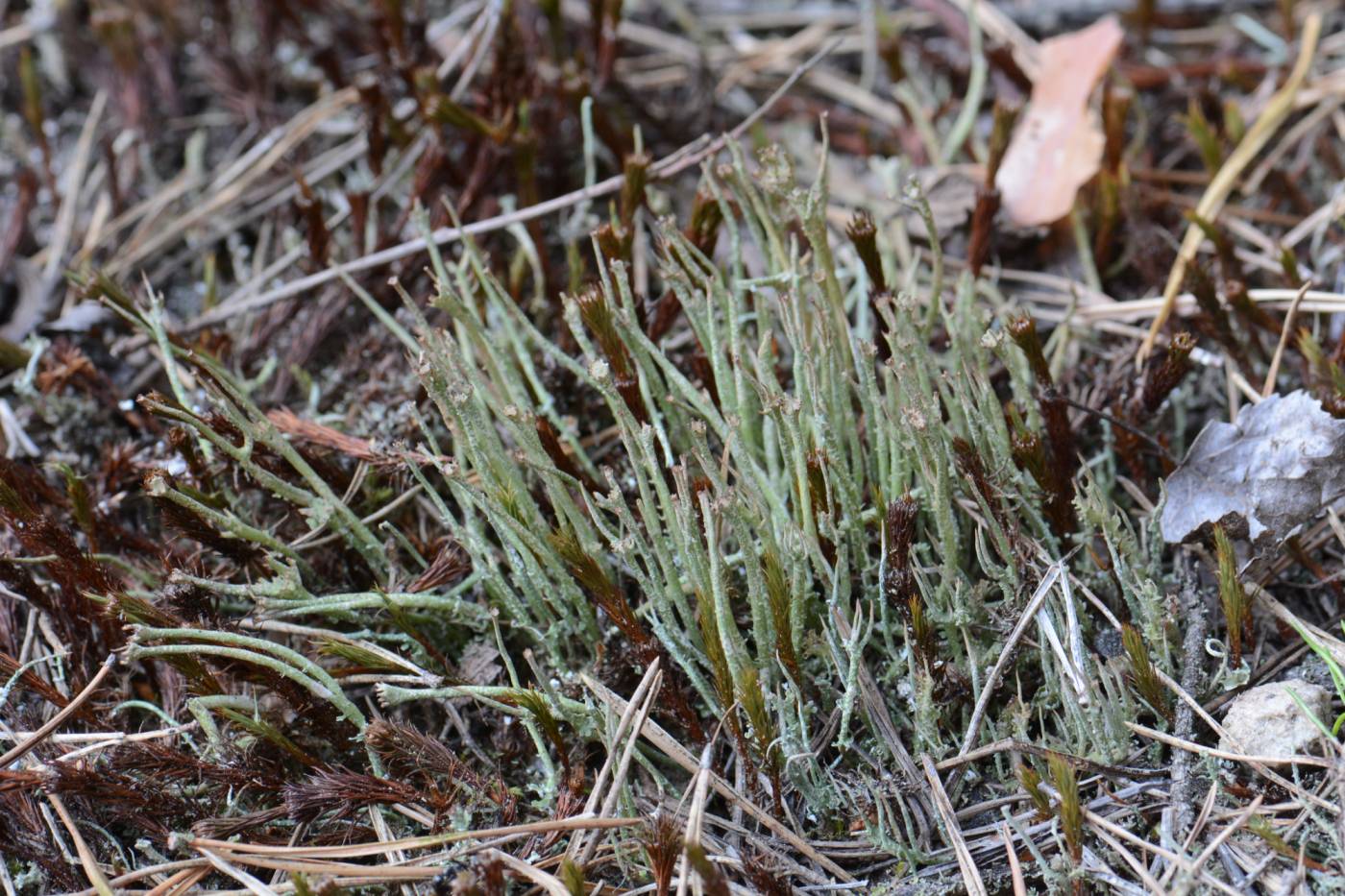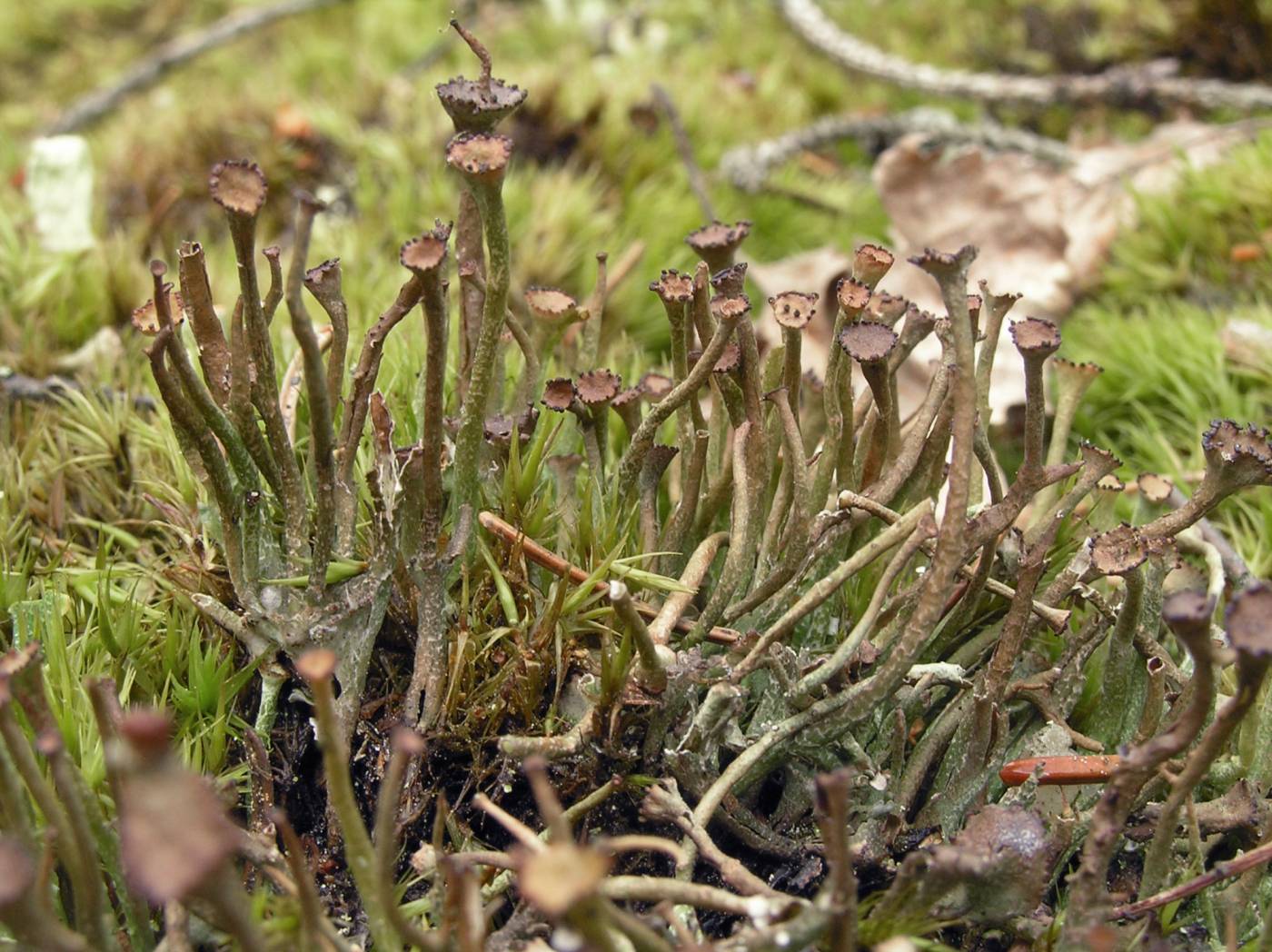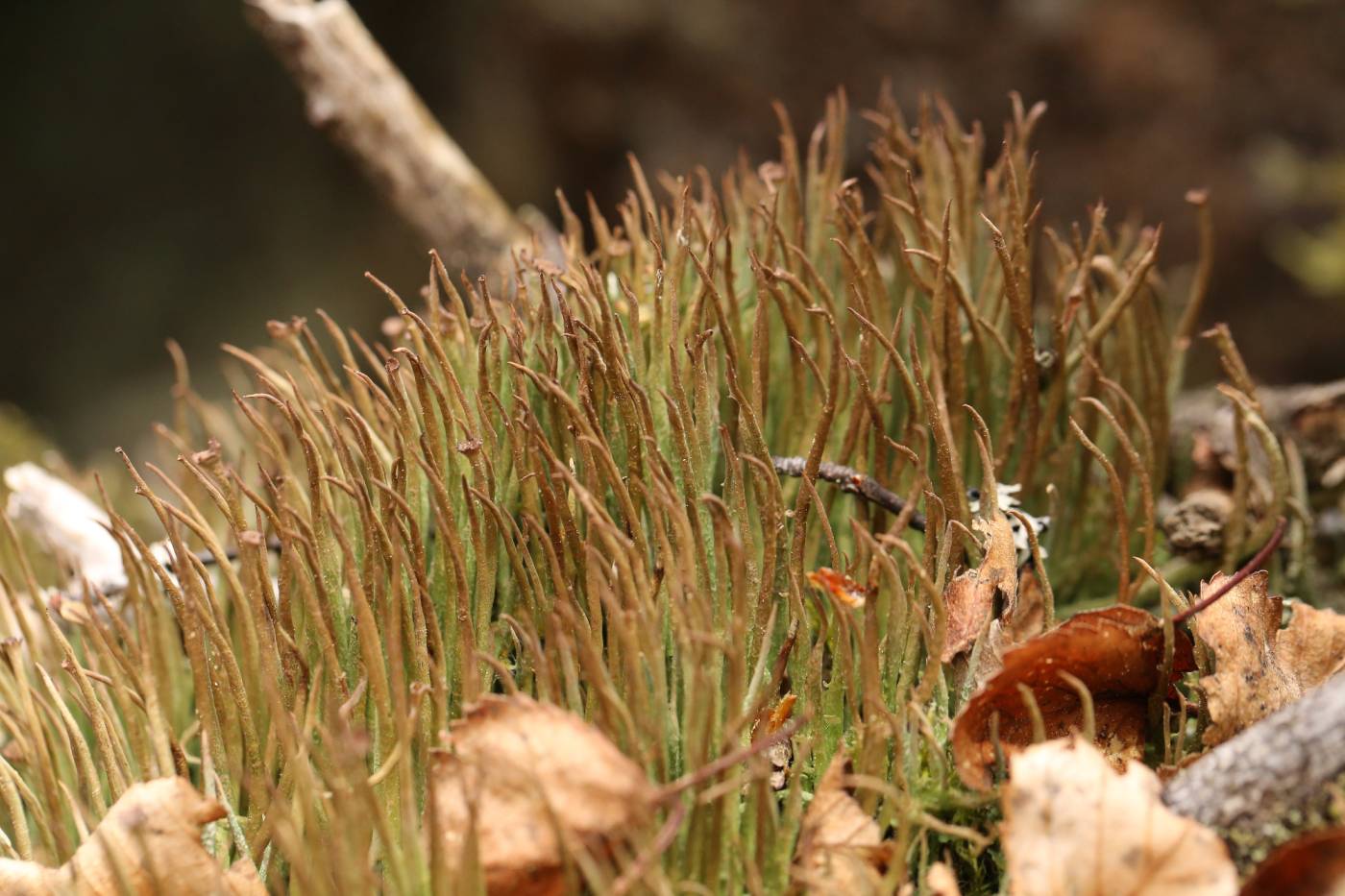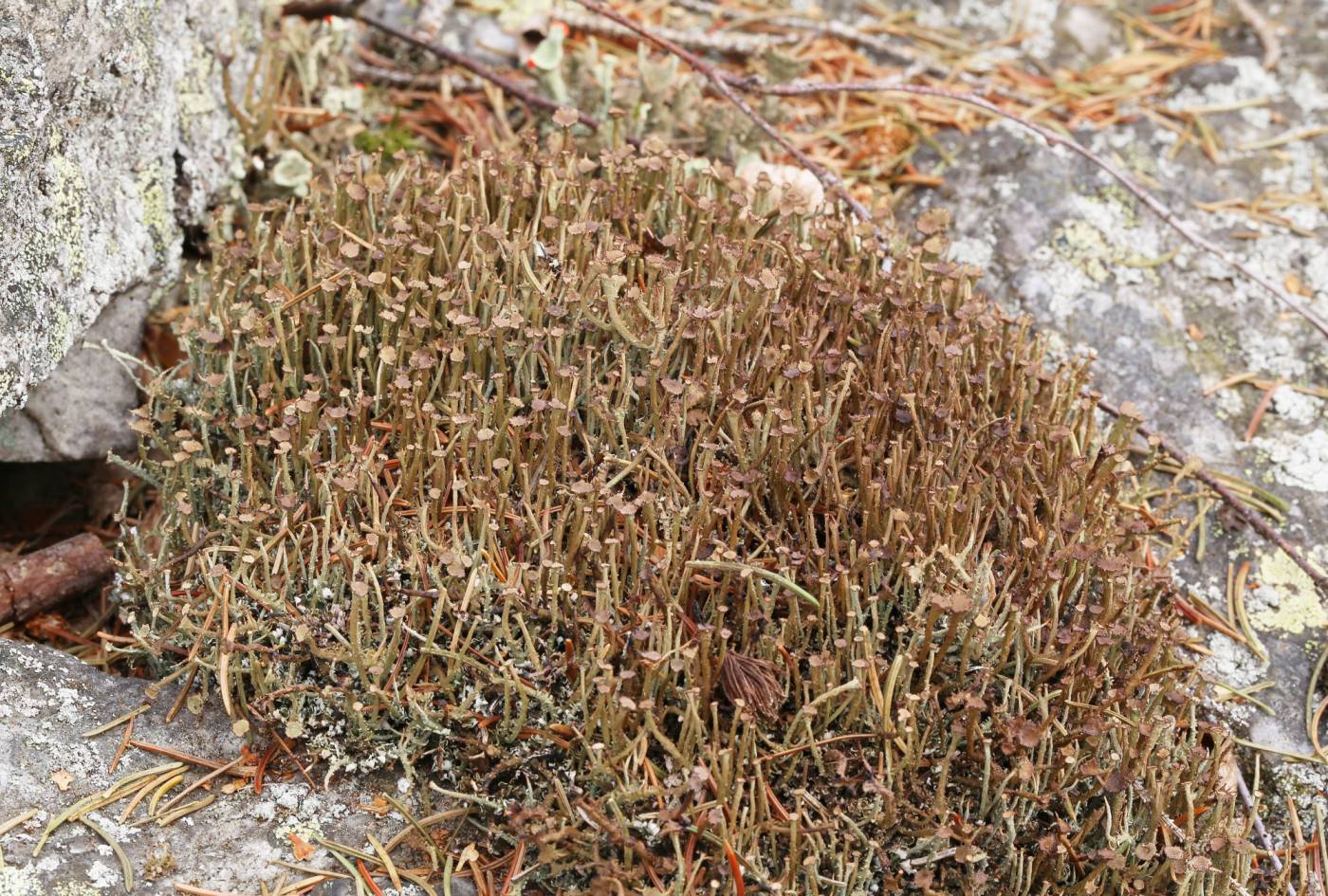Cladonia gracilis is one of the most variable Cladonia species. It is characterized by a green to brown, corticate and glossy surface of podetia. Their size and shape are very variable as well as the presence of scyphi. Several subspecies are recognized which morphologically correspond to certain forms. Based on molecular data, it is assumed that C. gracilis represents a complex of newly emerging taxa, which hybridize with one another (Pino-Bodas et al. 2011, Ahti & Stenroos 2013). The branched forms are sometimes difficult to differentiate from C. furcata, which has open axils, at least in part.
Cladonia gracilis grows on acidic soil from lowlands to mountains. Rarely, it also occurs on mossy rocks and decaying wood. It grows, e.g., on screes, heathlands, in open pine forests and near rock outcrops. The species is common in Europe. In the Czech Republic, it is quite abundant in the western part and rarer in Moravia.
Literature: Pino-Bodas R., Burgaz A. R., Martín M. P. & Lumbsch H. T. (2011): Phenotypical plasticity and homoplasy complicate species delimitation in the Cladonia gracilis group (Cladoniaceae, Ascomycota). – Organisms Diversity & Evolution 11: 343–355. Ahti T. & Stenroos S. (2013): Cladoniaceae. – In: Ahti T., Stenroos S. & Moberg R. [eds], Nordic Lichen Flora 5: 87–89.
taxonomic classification:Ascomycota → Lecanoromycetes → Lecanorales → Cladoniaceae → Cladonia
Red List (Liška & Palice 2010):LC – least concern
Occurrence in the Czech Republic
All records: 700, confirmed 425. One click on a selected square displays particular record(s), including their source(s).




